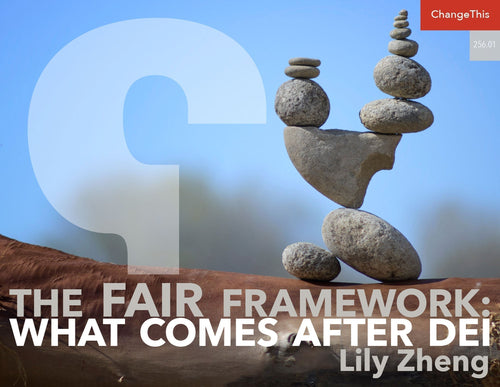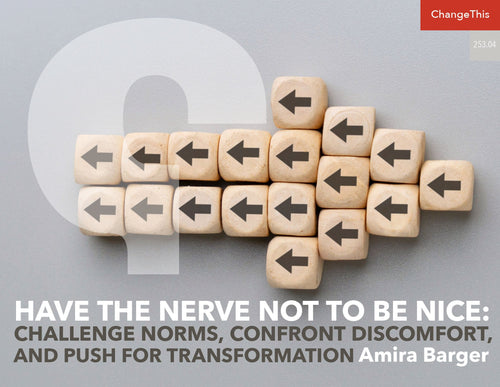The Opportunity to Govern: How the Supreme Court Is Reshaping America
From 2011, when Republicans gained control of the House of Representatives and denied President Barack Obama a governing majority, until the pandemic forced Congress’s hand in 2020, Congress enacted hardly any major legislation outside of the tax law President Donald Trump signed in 2017.
In the same period, the Supreme Court dismantled much of America’s campaign finance law, severely weakened the Voting Rights Act, permitted states to opt out of the Affordable Care Act’s Medicaid expansion, created a new “religious liberty” doctrine permitting someone who objects to the law on religious grounds to diminish the rights of third parties, weakened laws shielding workers from sexual and racial harassment, expanded the right of employers to shunt workers with legal grievances into a privatized arbitration system, undercut public sector unions’ ability to raise funds, effectively eliminated the president’s recess appointment power, and halted President Obama’s Clean Power Plan.
Lest you think that the last decade was a never-ending stream of losses for liberals, the Court held that every state must permit same-sex couples to marry, and it held that federal anti-discrimination law prohibits employers from firing individuals because of their sexual orientation or gender identity.
The Supreme Court, in other words, has become the locus of policymaking in the United States. The lion’s share of the legal changes that have occurred over the last decade were spearheaded, not by elected officials, but by the nine unelected members of the nation’s highest Court.
And, with Republicans now controlling two-thirds of the seats on the Supreme Court, the Court could potentially sabotage any policy initiative pushed by President Joe Biden. It can also manipulate our voting rights laws to ensure that Republicans dominate future elections.
Part of the explanation for the shift in power from the elected branches to the judiciary is that congressional dysfunction fosters judicial dominance. As Professor Rick Hasen explains in a 2012 study, Congress is now nearly 80 percent less likely to enact legislation overriding a Supreme Court decision than it was several decades ago. Hasen defined the term “override” to include any “successful piece of federal legislation [that] overturned, reversed, or modified a Supreme Court statutory interpretation holding.”
Between 1975 and 1990, Congress enacted “an average of twelve overrides of Supreme Court cases in each two-year Congressional term.” That number shrunk to 5.8 overrides “for each term from 1991 to 2000, and to a mere 2.8 average number of overrides for each term from 2001 to 2012.”
As Congress has grown more partisan and more polarized, Hasen explained, it’s become less and less able to form the consensus necessary to override an erroneous Supreme Court decision. Though there are still rare cases where a single political party controls both Congress and the presidency, and the members of that party agree that a particular Supreme Court decision should be overruled, “partisanship seems to have strongly diminished the opportunities for bipartisan overrides of Supreme Court cases, in which Democrats and Republicans come together to reverse the Supreme Court.”
As Congress grows less and less able to enact ordinary legislation, the Supreme Court is more and more likely to become the final word on questions of policy.
Hasen’s study, however, only offers a partial explanation of the Supreme Court’s increasing dominance. Congress, after all, only has the power to override court decisions interpreting (or misinterpreting) a federal statute. When the Supreme Court declares a law unconstitutional, that decision can only be over-ruled by the Supreme Court itself—or, in extraordinarily rare instances, by a constitutional amendment.
The full story of how the Supreme Court grew into the most important policymaking body in the United States is also a story about partisan polarization. It is a story about how the justices—and the men who appointed those justices—themselves became polarized.
For much of the last several decades, Democrats and Republicans largely shared a bipartisan consensus that the courts should play a limited role in society. Indeed, if anything, Republicans tended to be more skeptical of judicial power than their Democratic counterparts.
President Richard Nixon campaigned against judges who “impose their social and political viewpoints upon the American people.” President Ronald Reagan promised judges who would exercise “judicial restraint.” President George W. Bush warned of judges who “give in to temptation and make law instead of interpreting."
Indeed, until very recently, conservative lawyers organized around the principle that courts should be very cautious about exercising too much power. In a 2006 address to the conservative Federalist Society, for example, former federal appellate judge and then secretary of homeland security Michael Chertoff credited the society for catapulting arguments for judicial restraint into the legal mainstream. “In large part because of the work that the Society and others have done,” Chertoff claimed, “the claim for judicial modesty is sufficiently well-established that everybody understands, even the critics of that claim, that they have to take it seriously and they have to address it.”
But judicial modesty is now very much out of fashion in conservative legal circles. Many of the same men and women who spent the second Bush administration arguing that judges need to exercise judicial restraint are now the most vocal advocates for increased judicial power.
In 2005, for example, future justice Neil Gorsuch denounced “American liberals” who “have become addicted to the courtroom, relying on judges and lawyers rather than elected leaders and the ballot box, as the primary means of effecting their social agenda on everything from gay marriage to assisted suicide to the use of vouchers for private school education.”
And yet, as a member of the Supreme Court, Gorsuch has called for the judiciary to claim a broad new power to veto federal regulations. He’s argued that courts should give Christian conservatives broad exemptions from the law. And he’s even suggested that the Court should revive an antiquated “freedom of contract” doctrine that it once used to strike down basic labor protections such as a minimum wage.
Indeed, Justice Gorsuch, who once accused liberals of using litigation to implement their policy preferences regarding private school vouchers, joined a Supreme Court decision forcing states with voucher programs to provide such vouchers to religious schools.
So what happened? How did a political party that, until very recently, was very fearful of judicial power learn to stop worrying and love judicial activism? It is a story I tell in my book The Agenda. I focus primarily on four areas:
VOTING RIGHTS
More than a century ago, the Supreme Court acknowledged that the right to vote is “preservative of all rights.” Formal legal rights mean little if our leaders are not accountable to the people. And yet, the Roberts Court has been unusually hostile to voting rights.
In Crawford v. Marion County (2008), it all but eliminated a rule prohibiting laws that impose restrictions on the right to vote that vastly exceed the benefits of that law. In Shelby County, the Court effectively struck down a key provision of the Voting Rights Act, which required states and localities with a history of racial voter suppression to “preclear” any new voting laws with officials in Washington, D.C. And in Abbott v. Perez (2018), the Court held that victims of intentional racial voter discrimination must overcome such a high burden of proof that it may no longer be possible for such plaintiffs to prevail in all but the most egregious cases.
All of this has happened while the Court was simultaneously undercutting our regulation of campaign finance, permitting partisan gerrymandering to go unchecked, and defunding much of the Democratic Party’s political infrastructure. And all of these prior decisions could only be the tip of the iceberg. Now that the relatively moderate Justice Anthony Kennedy is no longer around to provide a check on the Court’s Republican majority, much more of our law protecting the right to vote is likely to fall.
And it’s worth noting that Republicans on the Supreme Court are able to launch such an attack on voting rights solely because our constitutional system rejects the basic democratic principle that all votes should count equally. Donald Trump, after all, lost the popular vote to Hillary Clinton by nearly three million ballots in 2016. And at present, the Senate is malapportioned to effectively give extra seats to votes from conservative, largely white states.
The first justice in American history to be nominated by a president who lost the popular vote and confirmed by a bloc of senators who represent less than half the country is Trump’s first appointee, Neil Gorsuch. The second is Brett Kavanaugh, Trump’s second appointee. And the third is Amy Coney Barrett, Trump’s third.
THE POWER OF THE FEDERAL ADMINISTRATIVE STATE
Many federal laws lay out a broad policy seeking to improve access to health care, reduce pollution, prevent exploitation of workers, or to achieve any of a myriad of other goals. The details of implementing this policy are then delegated to policy experts within an agency like the Environmental Protection Agency or the Department of Health and Human Services.
Beginning in the Obama administration, however, the Republican Party’s top legal minds turned sharply against such delegations of power to Executive Branch agencies. Annual gatherings of the Federalist Society, which played an outsized role in selecting President Trump’s judicial appointees, became showcases for various proposals to strip federal agencies of their ability to regulate business. Hostility toward federal agency power became an “unspoken litmus test” for anyone hoping to be appointed to the Supreme Court during the Trump presidency.
Five members of the Court’s Republican majority, meanwhile, have signaled that they intend to give themselves a broad new veto power over federal agencies. The practical impact of such a decision will be that future presidents and their subordinates will need to seek permission from a conservative judiciary to implement all sorts of policy changes.
RELIGION
Until very recently, the Court struck a careful balance between protecting religious liberty and maintaining the rule of law in a pluralistic society. Religious people enjoyed a robust right to practice their own faith, but they could not wield religious liberty claims to cut away the legal rights of others.
This was especially true in the business context. As the Supreme Court held in United States v. Lee (1982), “[w]hen followers of a particular sect enter into commercial activity as a matter of choice, the limits they accept on their own conduct as a matter of conscience and faith are not to be superimposed on the statutory schemes which are binding on others in that activity.” But the Court held for the first time, in Burwell v. Hobby Lobby (2014), that religious objectors may invoke their faith to limit the rights of a third party. Now that this wall’s been breached, the Court is likely to give religious conservatives a broad new power to defy laws that they object to on religious grounds—including, most likely, the power to ignore many anti-discrimination laws.
Yet, even as the Court’s shown extreme solicitude for the grievances of conservative Christians, it’s been far less sympathetic to religious liberty claims brought by adherents to less politically powerful faiths. Hence the Court’s decision to uphold President Trump’s travel ban imposed on several largely Muslim nations.
STANDING
There is a threshold question facing anyone who hopes to vindicate their legal rights in court—who is allowed to sue in the first place? The Roberts Court has given major corporations sweeping power to immunize themselves from class action lawsuits, and an even broader power to shunt workers and consumers into a privatized arbitration system that tends to favor corporate parties. These, and other similar decisions, risk turning basic legal rights into paper tigers. After all, what’s the point of a law prohibiting workplace discrimination or forbidding wage theft if workers cannot sue to enforce it?
There is a unifying theme surrounding these four topics. This Court has, at times, protected controversial rights, including the right to an abortion and the right to be free from anti-LGBTQ discrimination—although we have just witnessed the constitutional right to an abortion overturned. But the four topics explored by this book—democracy, administrative law, religion, and the right to sue—all involve cases that extend far beyond any individual right and that shape the very nature of our government.
There is little doubt that, if Republicans maintain their current majority on the Supreme Court, the law will continue to lurch hard to the right on issues like reproductive rights, affirmative action, and private school vouchers.
But the purpose of The Agenda is not to itemize every policy change that’s likely to be implemented by a Republican Court. Rather, it’s to examine Supreme Court decisions that cut across all issue areas. A Republican Supreme Court will fundamentally alter the structure of the American system of government, and who is allowed to exercise power within that system.
The cases discussed in my book concern fundamental questions such as: Who is actually allowed to make use of their legal rights? Who is beyond the reach of the law? How is the government allowed to address the many complex problems facing a modern state? And they concern the most important question of all: Who chooses the people who make our laws?
A right to be free from discrimination means nothing if it cannot be enforced in court. Or if the person engaged in discrimination is above the law. Or if lawmakers elected by a small, conservative segment of the population can repeal that right.
If you take one lesson from the book, it should be this: The Supreme Court operates in subtle ways. The full impact of its decisions rarely can be gleaned from the cases that draw the biggest headlines or that are most comprehensible to non-lawyers. And some of the Court’s least understood and most arcane decisions are fundamentally reshaping our nation—transforming it into something far less democratic.
The danger presented by a 6–3 Republican Court, in other words, is far greater even than a decision tossing out Roe v. Wade. The current Supreme Court is likely to build a nation where conservatives, and only conservatives, have the opportunity to govern.
Adapted from The Agenda
Copyright © 2021 by Ian Millhiser
All rights reserved
ABOUT THE AUTHOR
Ian Millhiser is a senior correspondent at Vox, where he focuses on the Supreme Court, the Constitution, and the decline of liberal democracy in the United States. Before joining Vox, he was a columnist at ThinkProgress. He is the author of Injustices: The Supreme Court’s History of Comforting the Comfortable and Afflicting the Afflicted, published in 2015, and his writings have appeared in The New York Times, The Guardian, The Nation, American Prospect, and the Yale Law & Policy Review. He received his J.D. from Duke University and clerked for judge Eric L. Clay of the United States Court of Appeals for the Sixth Circuit. He lives in Arlington, Virginia.










































